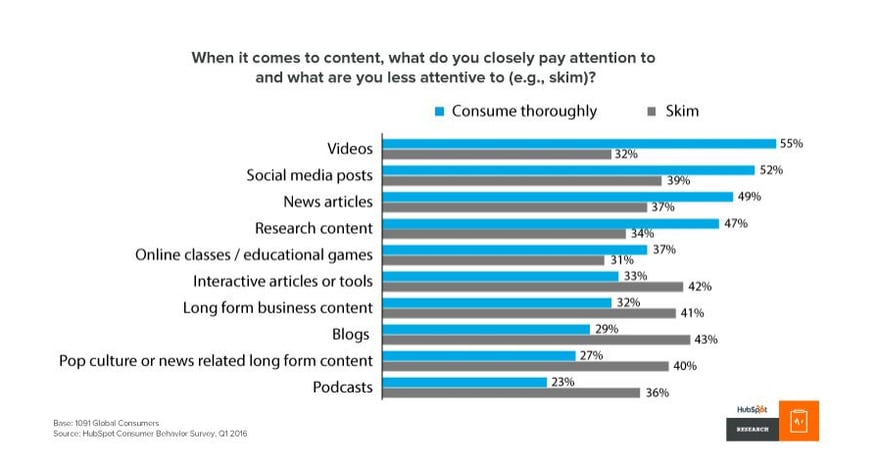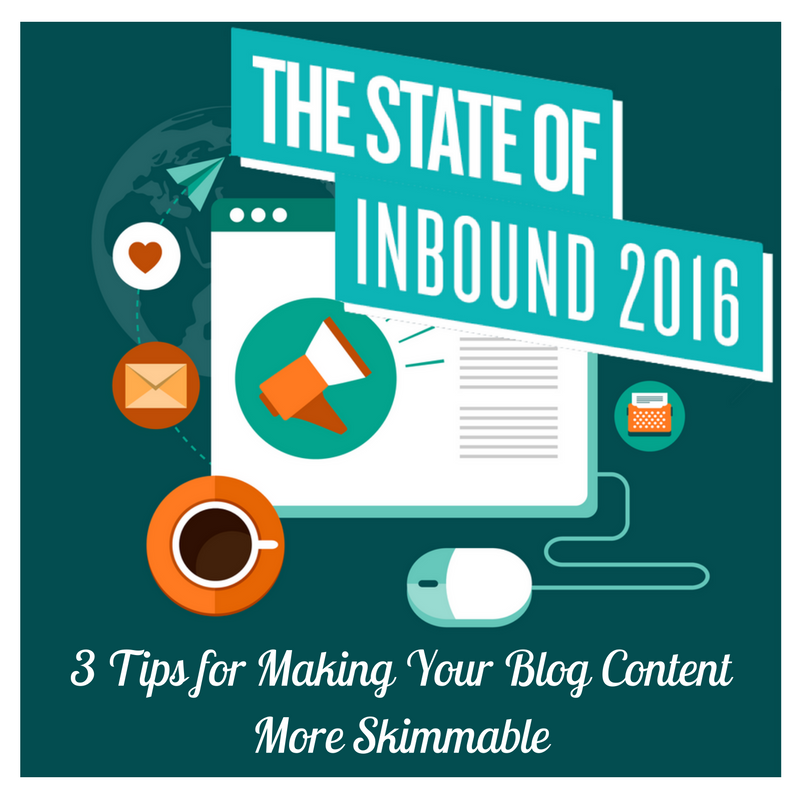As outlined in State of Inbound 2016, content will always be an essential part of inbound marketing. However, the way people take in information is changing. People want their information to stay up to date, but they want it as quickly as possible. This can be largely inferred by the fact that 45% of people want their content in the form of social posts. People want to stay up to date on world news, upcoming trends, and industry advancements, but they don't want to dedicate a lot of time to doing so.
Related Blog: 4 Tips for SEO Blogging to Leave Your Competition in the DustKeeping this in mind, a popular trend has been to create content that is easy for readers to skim. Now, this may sound counterintuitive. If you are going through great lengths to create educational blog content for your readers, why would you want them to just skim it? The answer to that question: user experience. 43% of people are looking for content that they can enjoy quickly and learn from, so that is what you must provide in order to create the best user experience for your visitors!
Here are 3 of the most effective ways for inbound marketers to create skimmable content for their readers:
1. Incorporate Visuals
It probably comes as no surprise that visuals are an effective way to help readers skim your content. Because visuals such as images, infographics, and videos grab readers attention, they are much more likely to read text associated with these graphics.
Of these three, as of late, video has become the most attractive form of content for consumers. While people are looking to skim blog content, 55% of people said they are interested in video content and willing to commit their time to consuming this type of content.
Inbound marketers like to analyze numbers before committing to a new content venture; ROI is a key part of how to measure success. Video content has proven to be more than successful as it attracts 8 million views a day by Facebook users. If users are enjoying the increased video content on social media platforms, they will surely enjoy its presence on your blog page. Use video analytics tools such as Wistia to track engagement, conversions and ROI from your video marketing efforts.
2. Cut Out the Guesswork
The title of a blog is the first guiding point for readers to understand what the content will be about. However, once they have read the title and decided to read the content, your job of engaging with them to help them understand what the content is about is not over. Don't make your readers guess what the most important information is in your content. You can guide them quickly through this information by using:
- Bullet points
- Highlighted or bolded text
- Subheadings to guide reading
3. Link to Credible Sources
Rather than taking the time to cite credible sources with lengthy in-text citations, link to those sources in your text. Not only does this allow for a more concise blog for your readers, it also gives them the ability to decide how much more they would like to know. If they are interested in learning more information on a specific topic, they can click on the link. If they are content with the information they were able to glean from your content, they can stay on your site to continue to explore more information. Always remember to create links that open in a new window when sending people to external websites so that you don't lose the reader when they click on these sources.
Creating skimmable blog content is just one of the many recent trends for inbound marketing. To learn even more about this trend and others download the State of Inbound 2016. This insightful report compiled by HubSpot gives marketers a comprehensive look at where they should direct their marketing efforts to engage with all stages of the Buyer's Journey and convert the best leads for your company.




-1-1.png)

